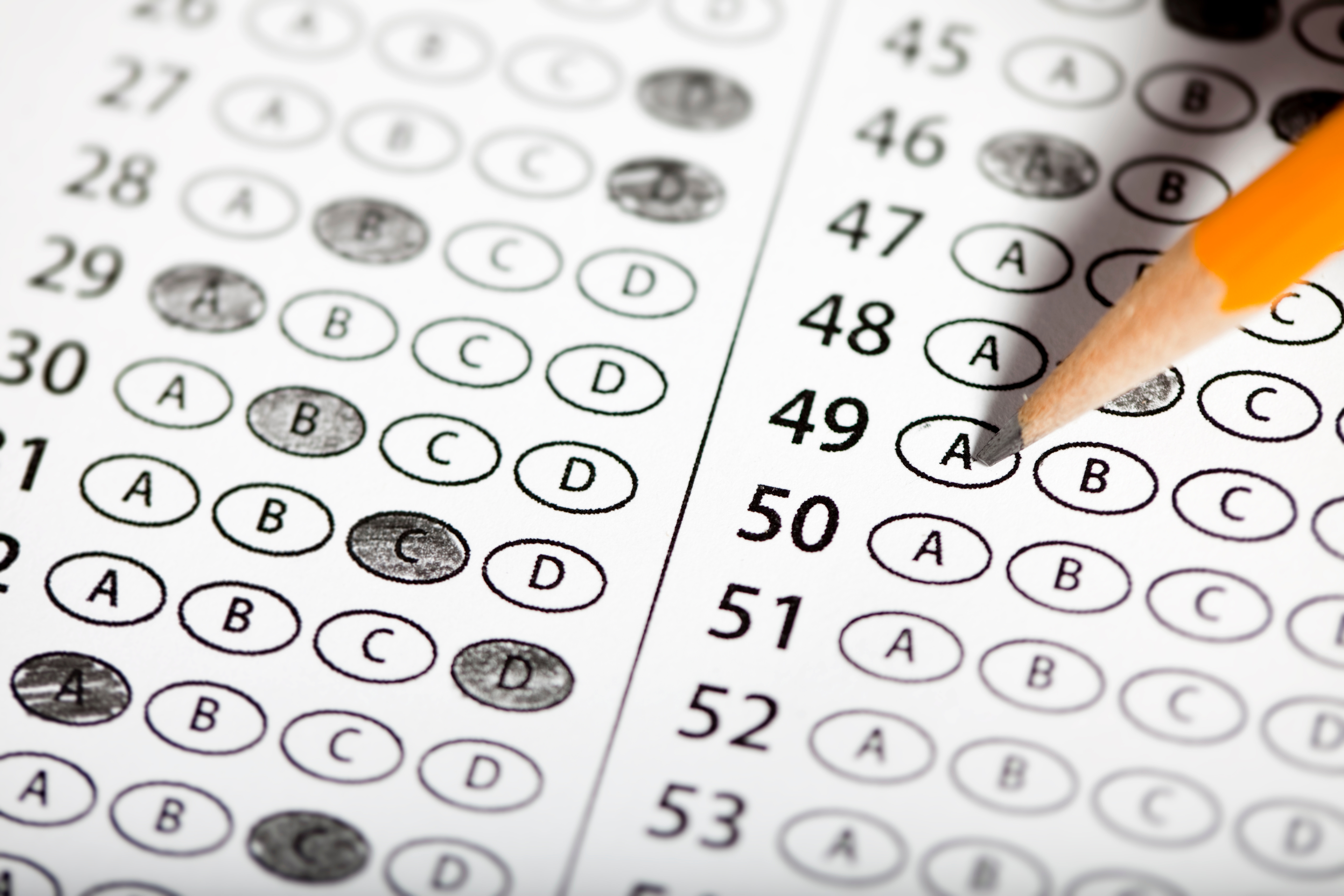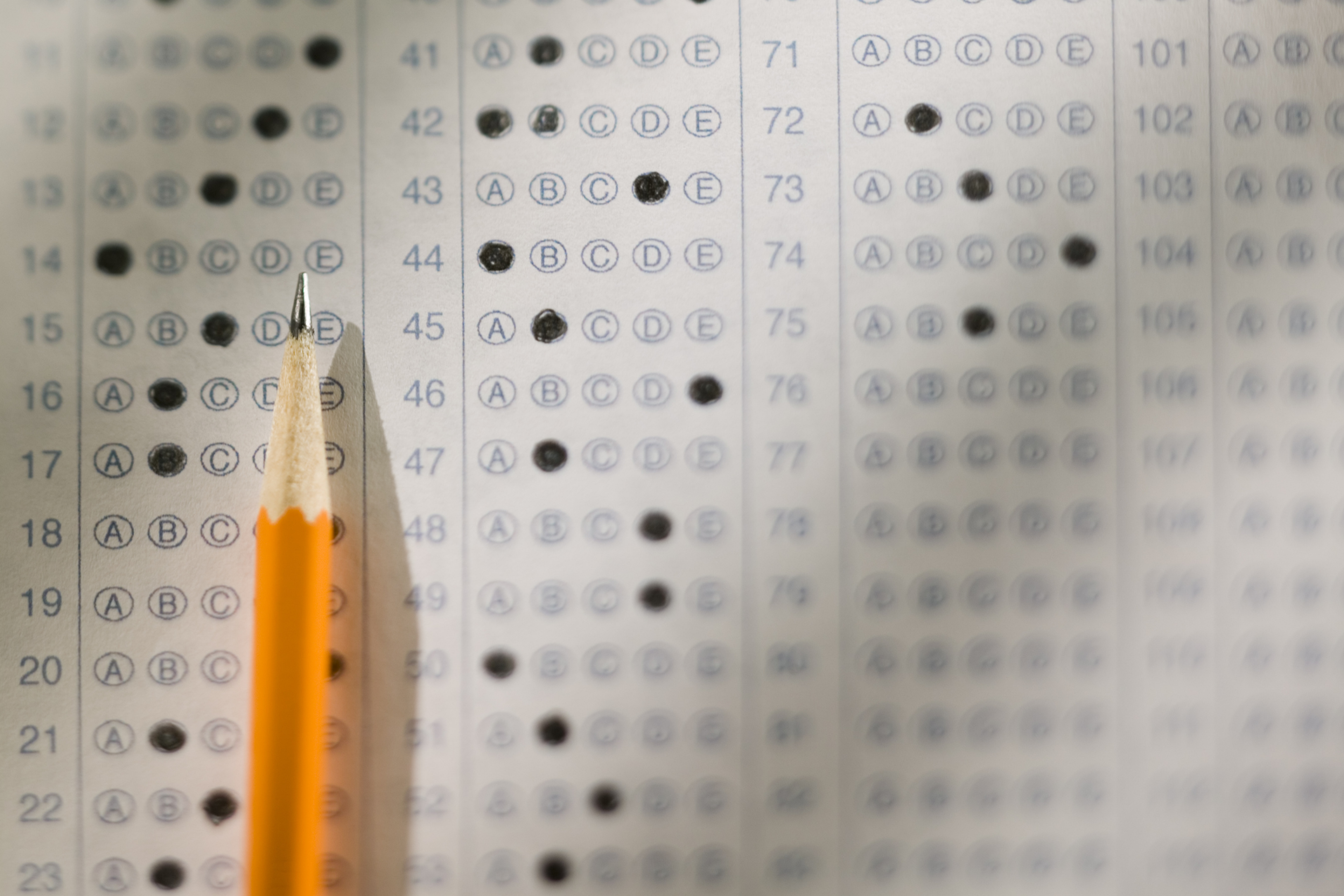GMAT Focus Score Chart — With Percentiles (2025)
Understand your GMAT Focus score with this expert-created 2025 score chart. Learn how section scores convert and what a competitive score really means.

By Mihir G.
GMAT Expert | 765 Score (100th Percentile) | Customized Strategy
Posted June 19, 2025

Table of Contents
What is the GMAT?
The GMAT is one of the standardized exams required for admission, along with the GRE, to most graduate business schools. More than 2,400 schools require either of these exams as part of their applications, including every top program. The Graduate Management Admission Council (GMAC) previously offered two versions of the exam but since January 31st, 2024, only the GMAT Focus Edition is offered.
I am a professional GMAT Focus tutor with a score of 765 (100th percentile) and a results-driven approach to test preparation. With years of experience helping students improve their scores, ranging from 685 to 715, I focus on strategic test-taking techniques, time management, and a personalized study plan tailored to each student’s strengths and weaknesses.
Understanding the GMAT scoring scale is essential for setting realistic goals and crafting a strong MBA application. With the transition to the GMAT Focus Edition, it’s more important than ever to know how your score compares to past versions and what it means for your admissions chances. In this article, I break down the GMAT Focus scoring system and how to interpret your results to maximize your application potential.
Read: GMAT vs. GRE for Business School–Which Should You Take and How to Ace Both
GMAT Structure: Previous GMAT vs. GMAT Focus
The previous version of the GMAT exam was approximately three hours long and included four sections: Verbal Reasoning, Quantitative Reasoning, Analytical Writing Assessment (AWA), and Integrated Reasoning. The total score range was 200 to 800 with 10-point intervals based on only the Quant and Verbal scores. The new GMAT Focus Edition is two hours and fifteen minutes long, with Verbal, Quantitative, and Data Insights sections. Each section’s score ranges from 60 to 90 and is weighted equally when calculating the overview score, which can now fall between 205 to 805 points in 10-point intervals. This helps distinguish the GMAT Focus Edition from the previous version of the GMAT exam.
The Quantitative section has 21 problems testing your knowledge and use of algebra, arithmetic, and logic; the Verbal section has 23 problems testing your critical thinking and reading comprehension abilities; and the new Data insights section has 20 questions measuring your ability to analyze, interpret, and apply data.
You will indicate the order of the sections of the test before you start. Once you have chosen this order, you cannot change it midway. You are also given one 10 minute break that you can choose to take between sections 1 and 2 OR sections 2 and 3.
Your score on each section will depend on not only the number of questions answered correctly but also the difficulty level of those questions. The GMAT Focus Edition, like the previous version of the GMAT exam, is a computer-adaptive test at the question level, meaning the difficulty level of the questions will change depending on your performance on previous questions. If you answer questions correctly, you’ll be asked more difficult questions. It is also computer-adaptive between sections, meaning how you do on one section can influence the difficulty of questions on the next section.
After completing the GMAT, you’ll receive an official score report listing your Quant and Verbal Reasoning and Data Insights section scores and your total score. This is an improved version of the score chart compared to what was previously provided to test-takers. The official score will be available to you within 1-3 business days, but may take up to 20 minutes.
Key Highlights
- The GMAT Focus Edition is 2 hours 15 minutes, 45 minutes shorter than the old GMAT.
- The GMAT Focus has three sections (Quantitative Reasoning, Verbal Reasoning, and Data Insights), each 45 minutes.
- There is no longer a writing portion of the exam. Geometry and sentence correction questions have also been removed.
- The new composite score range is 205-805; section scores are 60-90.
- Test-takers are able to change up to three answers per section.
- An enhanced score report is now included for free.
What is a Good GMAT Score?
When interpreting your GMAT score or determining a target score while preparing for the GMAT exam, it’s important to understand three main principles. Firstly, with thousands of test-takers each year, admissions committees interpret your score by comparing it to the national average in the form of a percentile. The average national GMAT score from 2017 to 2022 was 546.01 with the average Verbal Reasoning, Quantitative Reasoning, and Data Insights scores at 78.99, 77.71, and 74.41, respectively.
Secondly, most MBA programs release the average GMAT score of each year’s entering class, so check the GMAT scores of your target schools to make sure your score is considered competitive. You want to at least hit the average score of the most recent entering class, though above the average is preferable.
Lastly, your GMAT score is only one part of the application. If you’re not the best test-taker, you can strengthen your application with strong essays, letters of recommendation, experience, etc. A strong GPA also helps balance out subpar GMAT scores. The GPA and GMAT play a similar role in the review of the application: whereas essays, letters of rec, and a resume explain who you are as a person, what you’ve done, and what you want to do, GMAT and GPA are the primary indicators to the AdCom that you are academically inclined and can handle the intensity of a competitive MBA program. If your GMAT score and/or GPA are below average, you’ll need to show academic/intellectual prowess elsewhere in the application. It can be difficult to determine what a good GMAT FE score is. Since the FE is so new, most admissions committees only have data from years prior, where the GMAT FE was not offered. You can find a correspondence table below.
If you’re having trouble reaching your score, don’t give up! Book a free intro call with me and let's chat about how we can get your score up, based on your specific strengths and weaknesses.
Scaled Scores vs. Raw Scores
GMAT and other tests typically report two different kinds of scores: raw scores and scaled scores. Raw scores represent the number of questions answered correctly. Scaled scores adjust raw scores to account for question difficulty and other statistical factors. As mentioned, the GMAT Focus Edition provides a composite scaled score ranging from 205 to 805, reflecting performance across all three sections. The score scale distribution ensures a fair comparison across different test administrations.
Average GMAT Scores of Top MBA Programs
If you’re aiming for admission into the most prestigious MBA programs, you’ll need a great GMAT score. Applicants accepted to top-tier business schools usually reach a GMAT score of 700 or higher, with an average GMAT score range of around 720 to 740 for each year’s entering class, corresponding to percentile rankings of 99 to 100. For average GMAT scores and class profile info for the top 25 business schools, check out this article.
Here are the average GMAT scores for the M7 schools (older GMAT, not GMAT Focus, as most schools are still reporting against the original scale):
- Stanford GSB: 738
- Harvard Business School*: 730
- University of Pennsylvania Wharton: 733
- Chicago Booth: 729
- Northwestern Kellogg: 729
- MIT Sloan: 730
- Columbia Business School: 729
*HBS reports the median GMAT score, while the rest of the schools report the average.
Note that GMAT FE data is not available since the test was very recently released. You can find a table to convert the old GMAT scores to the FE scores below.

MBA Application Checklist
Download a free, customizable MBA application checklist to stay organized at every part of the process.
GMAT Percentiles: What They Are and How to Interpret Them
When comparing your GMAT score to the national average, you can utilize the percentile rankings of a GMAT score chart to see how your score compares to the scores of other test-takers. For example, if your ranking is in the 80th percentile, that means 80% of test-takers scored lower than or equal to you. If your ranking is in the 65th percentile, you scored better than 65% of test-takers.
Use the GMAT score chart below to find the corresponding percentile rankings for your GMAT score. If you haven’t taken the GMAT yet but would like to estimate your percentile ranking, try this online GMAT percentile ranking calculator.
GMAT Score Chart – Total Score
| Percentile Ranking | GMAT Focus Score | Old GMAT Score |
|---|---|---|
| 100.0% | 805 | 800 |
| 100.0% | 795 | 790 |
| 100.0% | 785 | 790 |
| 100.0% | 785 | 790 |
| 99.9% | 775 | 780 |
| 99.9% | 765 | 780 |
| 99.9% | 755 | 780 |
| 99.8% | 755 | 780 |
| 99.7% | 745 | 770 |
| 99.5% | 735 | 770 |
| 99.4% | 735 | 770 |
| 99.2% | 725 | 760 |
| 98.7% | 715 | 760 |
| 98.6% | 715 | 760 |
| 98.1% | 705 | 750 |
| 97.9% | 695 | 750 |
| 96.9% | 695 | 740 |
| 96.7% | 685 | 740 |
| 96.1% | 685 | 730 |
| 95.2% | 675 | 730 |
| 94.0% | 675 | 720 |
| 93.2% | 665 | 720 |
| 92.6% | 665 | 710 |
| 89.6% | 655 | 710 |
| 89.3% | 655 | 700 |
| 86.7% | 645 | 700 |
| 85.1% | 645 | 690 |
| 83.5% | 635 | 690 |
| 82.7% | 635 | 680 |
| 80.1% | 625 | 680 |
| 80.1% | 615 | 680 |
| 78.3% | 615 | 670 |
| 74.5% | 615 | 660 |
| 74.5% | 615 | 650 |
| 71.5% | 605 | 650 |
| 70.7% | 595 | 650 |
| 65.3% | 595 | 640 |
| 64.8% | 585 | 640 |
| 62.8% | 585 | 630 |
| 62.1% | 585 | 620 |
| 58.9% | 575 | 620 |
| 55.8% | 575 | 610 |
| 55.1% | 565 | 610 |
| 52.7% | 565 | 600 |
| 51.4% | 555 | 600 |
| 47.8% | 555 | 590 |
| 46.7% | 555 | 580 |
| 44.3% | 545 | 580 |
| 43.8% | 545 | 570 |
| 41.1% | 535 | 570 |
| 38.2% | 535 | 560 |
| 37.9% | 525 | 560 |
| 35.6% | 525 | 550 |
| 35.0% | 515 | 550 |
| 32.3% | 515 | 540 |
| 30.8% | 515 | 530 |
| 28.5% | 505 | 530 |
| 28.5% | 495 | 530 |
| 27.3% | 495 | 520 |
| 25.1% | 495 | 510 |
| 24.3% | 485 | 500 |
| 23.0% | 485 | 500 |
| 22.4% | 485 | 490 |
| 21.1% | 475 | 490 |
| 19.2% | 475 | 480 |
| 18.8% | 475 | 470 |
| 17.6% | 465 | 470 |
| 17.1% | 465 | 460 |
| 15.3% | 455 | 460 |
| 14.1% | 455 | 450 |
| 13.9% | 445 | 450 |
| 12.8% | 445 | 440 |
| 12.7% | 435 | 440 |
| 11.5% | 435 | 430 |
| 10.4% | 435 | 420 |
| 10.4% | 435 | 410 |
| 9.4% | 425 | 410 |
| 9.4% | 425 | 400 |
| 8.5% | 415 | 400 |
| 7.7% | 415 | 390 |
| 7.5% | 415 | 380 |
| 6.9% | 405 | 380 |
| 6.7% | 405 | 370 |
| 6.2% | 395 | 370 |
| 5.6% | 395 | 360 |
| 5.3% | 395 | 350 |
| 4.7% | 385 | 350 |
| 4.7% | 375 | 350 |
| 4.2% | 375 | 340 |
| 3.7% | 375 | 330 |
| 3.7% | 375 | 320 |
| 3.3% | 365 | 320 |
| 3.3% | 365 | 310 |
| 2.7% | 355 | 310 |
| 2.5% | 355 | 300 |
| 2.4% | 345 | 300 |
| 2.2% | 345 | 290 |
| 2.2% | 345 | 280 |
| 2.1% | 335 | 280 |
| 1.8% | 335 | 270 |
| 1.7% | 335 | 260 |
| 1.6% | 335 | 250 |
| 1.4% | 325 | 250 |
| 1.3% | 315 | 250 |
| 1.0% | 315 | 240 |
| 1.0% | 305 | 240 |
| 0.9% | 305 | 230 |
| 0.8% | 295 | 230 |
| 0.6% | 295 | 220 |
| 0.6% | 285 | 220 |
| 0.5% | 285 | 210 |
| 0.4% | 275 | 210 |
| 0.4% | 265 | 210 |
| 0.3% | 255 | 210 |
| 0.3% | 255 | 200 |
| 0.2% | 245 | 200 |
| 0.2% | 235 | 200 |
| 0.1% | 225 | 200 |
| 0.1% | 215 | 200 |
| 0.0% | 205 | 200 |
GMAT Score Chart – Verbal
| Percentile Ranking | GMAT Focus Verbal Score |
|---|---|
| 100% | 89-90 |
| 99% | 87-88 |
| 98% | 86 |
| 96% | 85 |
| 91% | 84 |
| 86% | 83 |
| 79% | 82 |
| 70% | 81 |
| 60% | 80 |
| 51% | 79 |
| 42% | 78 |
| 33% | 77 |
| 25% | 76 |
| 19% | 75 |
| 14% | 74 |
| 11% | 73 |
| 8% | 72 |
| 5% | 71 |
| 4% | 70 |
| 3% | 69 |
| 2% | 67-68 |
| 1% | 61-66 |
| 0% | 60 |
GMAT Score Chart – Quantitative
| Percentile Ranking | GMAT Focus Quantitative Score |
|---|---|
| 100% | 90 |
| 97% | 89 |
| 95% | 88 |
| 94% | 87 |
| 92% | 86 |
| 89% | 85 |
| 85% | 84 |
| 81% | 83 |
| 76% | 82 |
| 71% | 81 |
| 66% | 80 |
| 59% | 79 |
| 52% | 78 |
| 46% | 77 |
| 40% | 76 |
| 35% | 75 |
| 29% | 74 |
| 25% | 73 |
| 21% | 72 |
| 17% | 71 |
| 14% | 70 |
| 12% | 69 |
| 9% | 68 |
| 7% | 67 |
| 5% | 66 |
| 4% | 65 |
| 3% | 64 |
| 2% | 63 |
| 1% | 60-62 |
GMAT Score Chart – Data Insights
| Percentile Ranking | GMAT Focus Data Insights Score |
|---|---|
| 100% | 89-90 |
| 99% | 85-88 |
| 98% | 84 |
| 96% | 83 |
| 94% | 82 |
| 90% | 81 |
| 86% | 80 |
| 79% | 79 |
| 73% | 78 |
| 66% | 77 |
| 58% | 76 |
| 51% | 75 |
| 45% | 74 |
| 39% | 73 |
| 34% | 72 |
| 28% | 71 |
| 24% | 70 |
| 20% | 69 |
| 17% | 68 |
| 14% | 67 |
| 12% | 66 |
| 10% | 65 |
| 8% | 64 |
| 7% | 63 |
| 6% | 62 |
| 5% | 61 |
| 4% | 60 |
Read: 10 Best GMAT Tutors
Tips for a High GMAT Score
- As you may have noticed, most GMAT test-takers tend to have a higher Verbal score and a lower Data Insights score and Quant score. As such, you may need to spend more time focusing on raising your Quant score and Data Insights score. Top Business schools place a higher importance on the Quant score.
- When preparing for the exam, focus on what you, uniquely, need to improve on. There is so much curriculum to cover and trying to know every single thing is laudable, but difficult. For efficient prep, as a professional GMAT tutor, I recommend identifying focus areas by taking a diagnostic practice test, and then focusing first on strengthening your areas of weakness for an outsized impact.
- The GMAC offers practice GMAT questions, as well as 2 free practice tests on its website, and you can also find other free resources for GMAT prep such as practice tests and study guides online.
- Don’t be afraid to retake the GMAT if you aren’t satisfied with your GMAT scores the first time around. Retaking the exam if you performed more poorly than expected is fairly common: about one-fifth of test-takers each year are sitting for a retake. The GMAC allows you to take the GMAT up to five times in one year and eight years in your lifetime as long as you wait at least 16 days between each retake.
- For more personalized GMAT prep, work with an expert tutor who can help you determine a target score, create a study plan, and tackle the most challenging portions of the GMAT.
For more resources to help you ace your GMAT and navigate the world of business school applications, check out these articles:
- GMAT Focus Sections: Overview & Structure Breakdown
- How to Study for GMAT: The GMAT Tutor's Guide
- Top 50+ Free Resources for GMAT & GRE Practice
- How Late Can You Take the GMAT/GRE for MBA Applications?
- The 10 Most Common Mistakes in GMAT Exam Prep and How to Avoid Them
Achieve Your Target GMAT Score with Expert Coaching
Mihir G. is a GMAT expert and strategic test prep coach who scored a 765 (100th percentile) on the new GMAT Focus Edition. With dual honors degrees in Biochemistry and Plan II from UT Austin — and professional experience at Capital One and Moderna — he brings both analytical rigor and real-world insight to every tutoring session. Mihir helps students master the test through customized, results-driven strategies that go beyond content to focus on timing, logic, and confidence. Book a free intro call with Mihir to get one step closer to your target GMAT score.
GMAT Score Chart FAQs
What is the GMAT Focus Edition total score range?
- The GMAT Focus Edition is scored from 205 to 805, encompassing the combined scores from the three sections: Quantitative Reasoning, Verbal Reasoning, and Data Insights.
How are scores calculated in the GMAT Focus Edition?
- Scores are based on the number of correct answers, the difficulty of the questions, and other statistical properties, ensuring a precise measurement of a test taker's abilities.
What sections are included in the GMAT Focus Edition?
- The GMAT Focus Edition includes three sections: Quantitative Reasoning, Verbal Reasoning, and Data Insights, each contributing to the overall score.
What are the different types of questions on the GMAT?
- The Verbal section includes Critical Reasoning (Analysis/Critique and Construction/Plan) and Reading Comprehension (Identify Stated Idea and Identify Inferred Idea) questions.
- The Quantitative section includes Problem Solving, Algebra, and Arithmetic questions.
- The Data Insights section includes Data Sufficiency, Graphs and Tables, Multi-Source Reasoning, and Two-Part Analysis questions.
How does the GMAT Focus Edition differ from the traditional GMAT?
- The GMAT Focus Edition is shorter, has three sections instead of four, removes Geometry, Sentence Correction, and Analytical Writing Assessment (AWA), and has a new scoring system.
Can you change answers during the GMAT Focus Edition?
- Yes, test takers can change up to three answers per section at the end of each section in the GMAT Focus Edition, providing more flexibility during the exam.
What is the duration of the GMAT Focus Edition?
- The GMAT Focus Edition lasts for 2 hours and 15 minutes, making it a shorter exam compared to the traditional GMAT.
Is the Enhanced Score Report included in the GMAT Focus Edition?
- Yes, the Enhanced Score Report is included for free in the GMAT Focus Edition, providing detailed insights into performance. It will become available after 1-3 business days (in some cases it may take up to 20 days) after completing the test.
What are the benefits of the GMAT Focus Edition's new scoring system?
- The new scoring system offers a more comprehensive evaluation of a candidate's abilities and allows for better comparison across different test takers.
How do I interpret my GMAT scores?
- Scores are interpreted by comparing them against percentiles and benchmarks provided by GMAT, which indicate your performance relative to other test takers. The percentiles can also be used to compare the GMAT Classic (discontinued) with the GMAT Focus Edition.

Written by Mihir
5.0
(19)
Mihir has helped clients get into organizations like:
Total Quality Logistics











